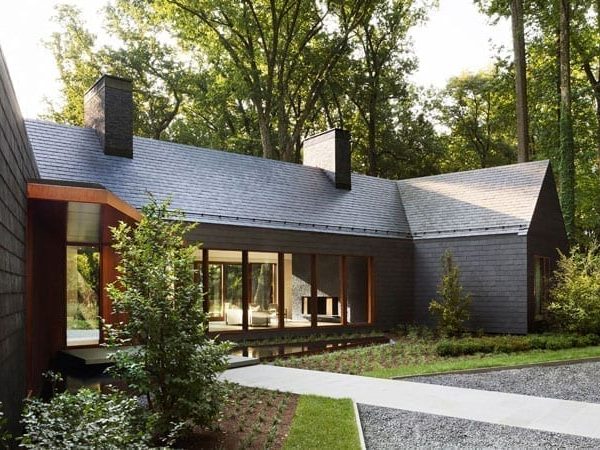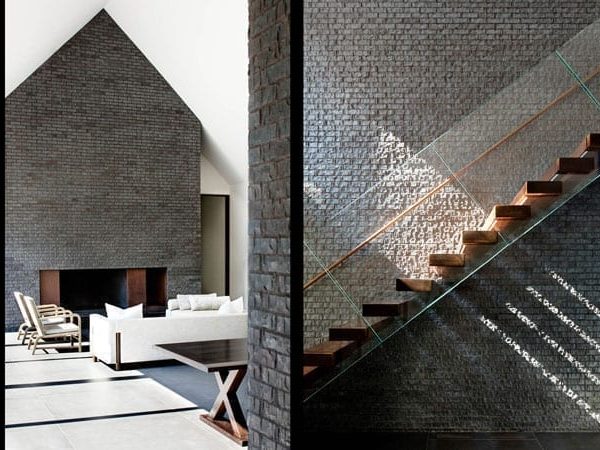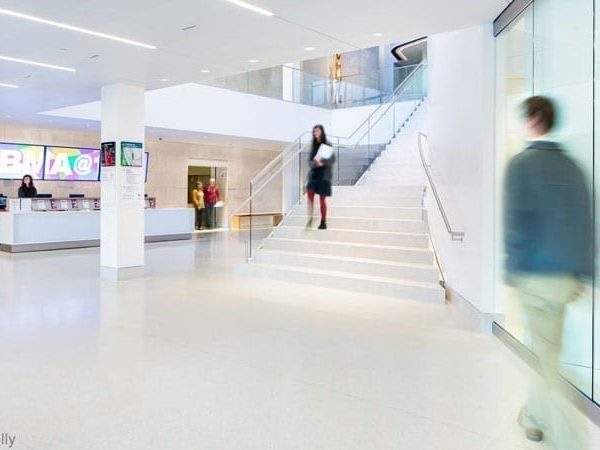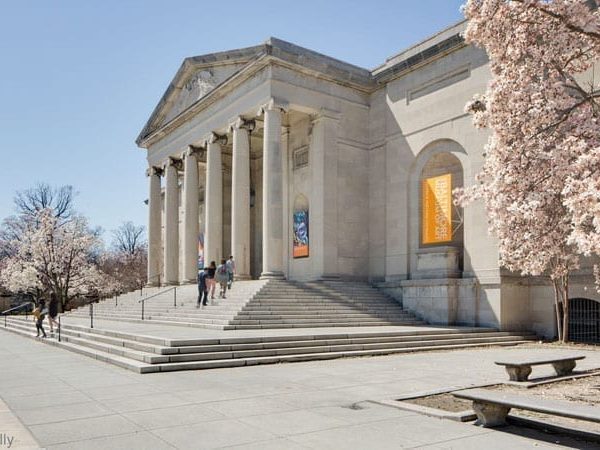Interviews

The responsibility of architecture | by Diana Friedman
Baltimore based architect, Doug Bothner has helped lead Ziger/Snead Architects for 18 years while growing his expertise in the architecture and design field. With an impressive repertoire of clients that include the Baltimore Museum of Art, National Cryptologic Museum Foundation, Washington International School, among other institutions and countless beautiful residential projects, Bothner is well versed in the art of designing impressive buildings. In this interview, Bothner tell us about the inspirations behind his work, the three essential givens he finds in every project, why large-format tile is so essential and effective for his projects and more.
Tell us about your background and your path to becoming an architect.
Some of my earliest memories growing up in New England are of helping my father renovate our historic house, originally built circa 1776. The house was a labor of love for him, and I was always right beside him as he reshaped the building and property into a home for a young family. These experiences had a profound effect on me – they instilled the idea that each of us has the ability to design and change our physical environment for the better.
My formal education in fine art (painting), art and architectural history, and finally architecture, gave me a solid foundation for practicing architecture and design. My informal education has been just as important. Observing the built and unbuilt environment through extensive travel, exploration, and sketching, has reinforced my belief that architects and designers have an important role to play in shaping the spaces and places we inhabit.
I believe that architecture is a physical embodiment of our values. Architects have a responsibility to improve our built (and unbuilt) environments in order to have a positive impact on the communities they serve.
Is there a person, place or experience that continually inspires your work or does it vary by client and context?
I am inspired by the iterative design process to find the best solution for each project. Each project has three givens: the clients’ aspirations, program, and the opportunities of the particular site or context. No matter the project type, exemplary architecture occurs at the most beautiful, optimal intersection of these givens.
Tell about your recent projects.
Our work spans markets and scales. I am excited about a few of the residential projects on the boards, both new construction and renovations, at the smaller scale, as well as a new 175,000 sf mixed-use residential project in the heart of a historic district here in Baltimore.
What first attracted you to Italian ceramic tile and how have you incorporated it into your projects?
Scale and quality. We have been interested in using very large format tile for over 10 years. Large format used to mean 30×60 and now it is more like 60×120 or even 120×120. Italian tile was attractive to us because it was offered at these larger scales at a quality and aesthetic that matched our requirements.
Is there a design or application that you would love to see developed in ceramic tile?
The materials we use need to make a statement not only by their aesthetic, but by their durability, quality, and sustainability story. Often however, the quality and cost of the installation is dependent on the labor market and the level of craft of the installer. I would love to see innovation in the labor side of the equation so that the beauty and durability of tile is maintained in all labor markets.
BIOGRAPHY
Douglas Bothner, AIA, LEED AP
Partner, Ziger/Snead Architects
Doug has helped lead Ziger/Snead for 18 years, becoming Partner in 2015. His work has been an integral part of the firm’s growth in the residential, educational, cultural and institutional markets. Significant clients include the National Cryptologic Museum Foundation, Washington International School, New Spires Arts, Maryland 9/11 Commission, Maryland Institute College of Art, Baltimore Museum of Art, Gilman School. His residential work has received multiple design awards and appeared in Dwell Magazine and Wallpaper, among others.
Doug received his master of architecture degree from Yale University School of Architecture and his bachelor of art from Wesleyan University where he graduated cum laude. He is currently serving on the board of the Contemporary Museum, and has been adjunct faculty at the Maryland Institute of College of Art, and a visiting critic at the University of Maryland, the Catholic University of America, and Morgan State University. Doug is a LEED Accredited Professional and a member of the American Institute of Architects.









